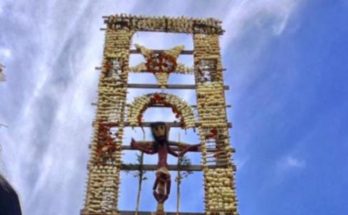The Foundation in Mesoamerica
By José Arturo Morales Tirado
For at least 2,500 years, cultural evolution has occurred in our Frontera Tierra Adentro (Inland Frontier) between volcanic Mesoamerica and semi-desert Aridoamerica. According to Miguel León Portilla (Arqueología Mexicana 79, May-June 2006), Mesoamerica was home to one of humanity’s original six civilizations. In the Nile River basin and delta, the Egyptian civilization flourished, influencing the eastern Mediterranean peoples and those of the Aegean islands. To the east, the Mesopotamian civilization grew around the Tigris and Euphrates rivers. And there was the Indus River valley, which influenced the greater Indian subcontinent and its people. In east Asia, the Yellow River influenced China, Korea, and other regions close to these contemporary countries. On the American continent, something similar happened in the intervolcanic valleys of the Andes, in the region of Peru, Ecuador, Bolivia, and their areas of influence. And finally, Mesoamerican civilization grew and flourished in the intervolcanic valleys of central Mexico and its areas of regional influence that include the present-day Yucatan Peninsula to the east and the present-day Frontera de la Tierra Adentro to the north.
Miguel León Portilla notes each of these civilizations developed independently and characterizes the process through which they evolved. The following processes were key: a) the system of social organization, b) the system of economic organization, c) the system of religious organization, d) the language, e) the form of communicating, acquiring, and transmitting knowledge, f) adapting to the environment, and g) use of the available resources.
For millennia, agriculture has been the basic cultural manifestation—everything that a human group does or creates—of these original groups of civilization. Mesopotamia, India, and Egypt grew on a throne of wheat and other crops, while China was founded mainly around rice and other crops. In the Andean zone of South America, the Inca civilization was founded around potatoes, corn (choclo), and other crops. Finally, here in Mesoamerica, the civilization was based around the farming of corn, beans, chilies, squash, tomato, sweet potato, peanuts, chapulín (grasshopper), avocados, and tejocote, among others.
By the way, Alfredo López-Austin, in “Temoachan and Tlalocan” (Fondo de Cultura Económica, 1999), refers to the fundamental concept in the complex religious system of Mesoamerica around polarity (or duality, opposites) as a projection of what is observed in the natural world. Similar processes occurred at practically the same time in the six original civilizations of the planet.

Additionally, López-Austín, in “Mexican Archeology” (Special Edition 92, August 2020), mentions that throughout the world, the major characters of myths are generated as an arsenal of explanations, integrating them into a large, systemic body of the cultural worldview. Thus, practically in all the religious systems of the original peoples of the world, at the center of the cosmovision is the star of our planetary system: the Sun. And so are other well-known celestial bodies in our daily reality, such as the Moon, Venus, Mars, and stars like Polaris, Sirius, and Antares. And earthly elements are included like mountains, volcanoes, caves, springs, rivers, lagoons, seas, and oceans.
In contemporary San Miguel de Allende and its cosmopolitan society, plus that of other localities of the Frontera Tierra Adentro, such as the cities and towns of Comonfort, Dolores Hidalgo, and San Felipe, or the neighborhoods and communities of Valle del Maíz, Guadiana, Ojo de Agua, Cruz del Palmar, Puerto de Nieto, and El Llanito, we have at least three additional elements that coexist in making the spirituality of different groups. Some have foundations closer to theological concepts and others to concepts of worldview; many more have a kind of addition of both, not a mixture, but a sum with its own characteristics. Thus, it gives us very complex living rituals with ancient roots, whatever the origin of the religions or worldviews.
The above seems wonderful to me in the contemporary reality of San Miguel’s multiethnic, multicultural, and cosmopolitan society. It’s the expression of religions and worldviews synthesized in myths, rituals, and characters through popular festivals of our region’s villas, neighborhoods, and towns. I look back fondly on some of recent ones like San Isidro Labrador, las yuntas, los locos, and San Juan. In contrast to this depth of cultural evolution, what seems unfortunate to me are the complaints of a few about the noise of rockets and fireworks—one of the multiple expressions of the complex popular rituals of our local society. I find it unfortunate not so much because of the fireworks and their sounds but because it expresses the low integration of some neighbors, most likely recent arrivals, to understanding and comprehending our wonderful and complex community of the Tierra Adentro region. To be continued…




